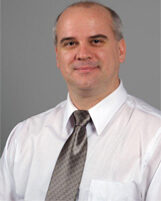According to the schedule, the post-doctoral fellow will be in charge of the following tasks:
1) 1-11 In-Depth Literature Review of SDR
2) 1-12 Study of Scientific Objectives
3) 1-22 Analysis and study of the integrated architecture and design of individual SDA modules
4) 1-25 Study of Contention Mechanisms
5) 2-10 Full blown system analysis and performance
6) 2-21 Design of prototype modulator and DRFS upconverter
7) 2-42 SDA/ISR platform architectural study
8) 2-44 Study of SDA performance, reliability, robustness and power consumption
9) 3-31 Resource Arbitration of DME and transponder during integration
10) 3-51 Determination of hardware/software integration issues
11) 3-25 Evaluatation of WBR under different flight test scenarios
12) 4-12 Full system Interoperability Analysis
13) 4-13 Study and analyze of On-the-fly reallocation of resources
The objective of the post-doctoral fellow’s project is to ensure that the theoretical developments done by the research team will lead to the final goal: a new architectural design of a software defined aviation transceiver with a view to resolving some of the needs of COCR and SESAR programs. He should work on the most important theoretical subjects of the project, from the initial architectural design of the software modules and their eventual integration in the SDR platform. One of the tasks of the post-doctoral fellow is to ensure, together with the professors conducting the research project, and the industrial groups, that the research subjects proposed during the four years advance at reasonable pace. He should also support the research team members during their research activities, guide and supervise their research work. He should always have a general view of the global project and mainly on the progress in the theoretical field. He will know about the work of the trainee, Master’s and Ph.D. students in theoretical areas.
During the first year, the post-doctoral fellow will start his research work with a thorough overview of the individual module requirements and integration goals and with a detailed literature review, a theoretical background about the transceiver components, and algorithms for interoperability. He will be actively involved in the detailed module design to the point of ensuring that reliability, interoperability, and robustness issues will be addressed. He will work also on the simulation of the flight navigation improvement using the Simulink model and the real data.
During the second year, the post-doctoral fellow will be involved in the development of the architecture of an improved avionics direct downconversion receiver and, particularly, into the simulation in Matlab/Simulink of the entire transceiver assembly. During this period, he will work very close with the Ph.D. students on these research subjects. In the third year post-doctoral fellow will review overall integration details, results, and flight test results. A critical aspect incumbent on the post doctoral student will be to ensure that lessons learned from flight test make their way back into the design process as it is taking place.
In the last year, the post-doctoral fellow will focus on the interoperability and robustness aspects and on the improvement that could be done in order to obtain a simple and compact transceiver platform, using the simplified architecture.
![]()
